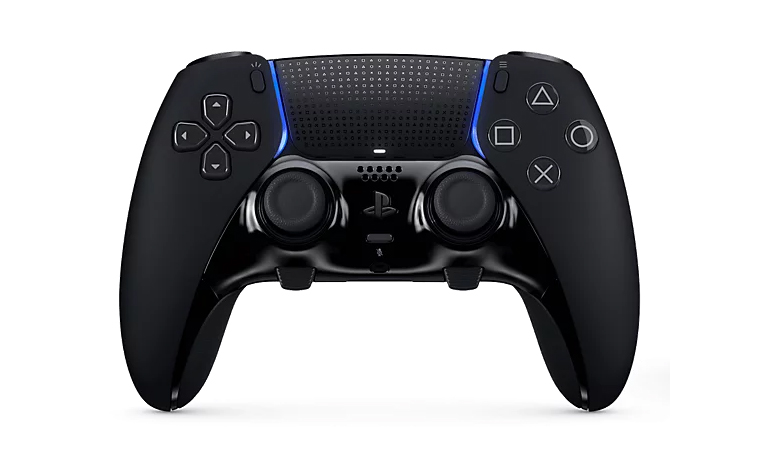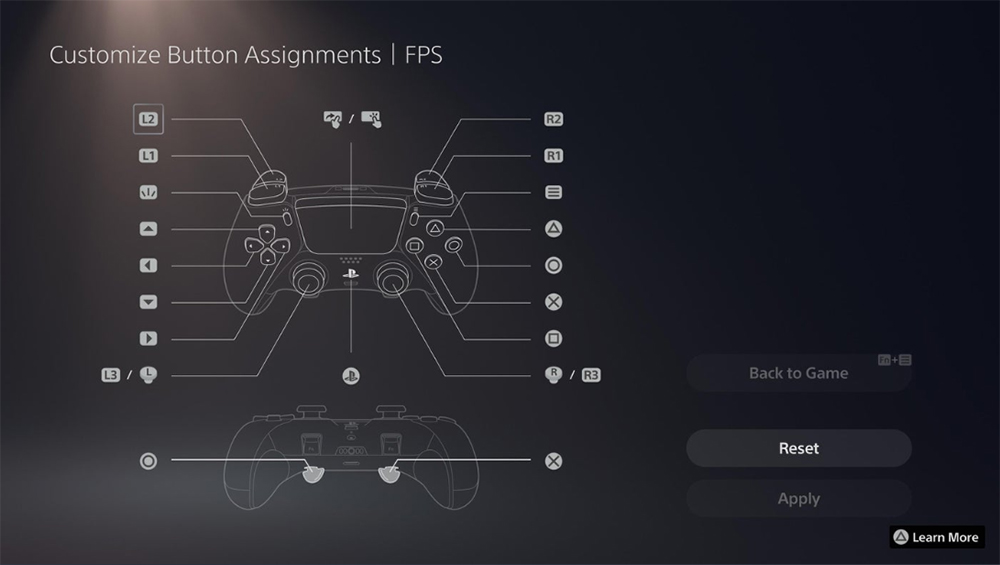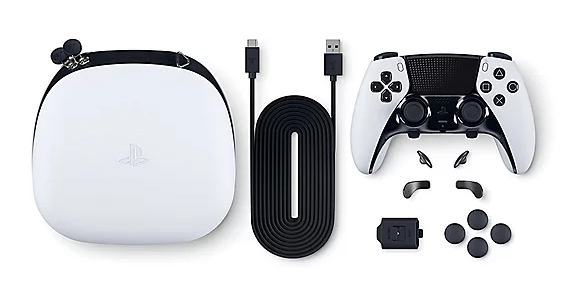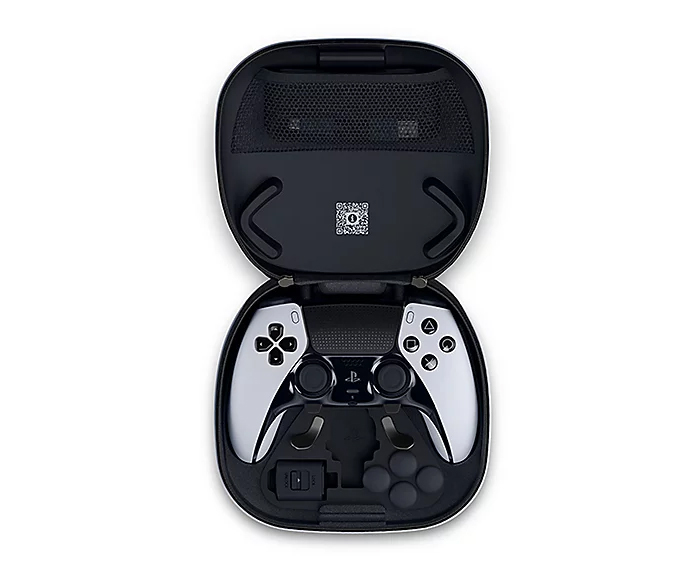PlayStation DualSense Edge Review
Premium Gaming Excellence
05 September 2024 · Marcus Wilson
Wired
IGN
The Bottom Line
The DualSense Edge is Sony's excellent first premium controller, offering extensive customisation and superior build quality. Battery life disappoints, but the £199.99 controller delivers genuine advantages for competitive gamers despite the high price.
Available on:
What we like
- Extensive customisation options with intuitive software integration
- Superior build quality with premium materials and swappable components
- Seamless PS5 integration with instant profile switching
What we don't like
- Significantly reduced battery life compared to standard DualSense
- High £199.99 price point limits appeal to casual gamers
- Only 2 rear buttons
Design and Build Quality
The PlayStation DualSense Edge maintains the familiar aesthetic of the standard DualSense whilst introducing subtle refinements that immediately signal its premium positioning. I found the controller's build quality to be exemplary, with Sony enhancing the original design through the addition of slip-resistant inner grips and a more substantial 11.7-ounce weight that's roughly 15% heavier than its predecessor.
The black D-pad and face buttons create a sophisticated contrast against the white body, whilst the touchpad features Sony's signature PlayStation symbols in a subtle pattern. I particularly appreciated the textured surfaces on the L2 and R2 triggers, which provide improved finger placement during extended gaming sessions.

Customisation Features
Where the DualSense Edge truly distinguishes itself is through its extensive customisation capabilities. The controller includes two swappable back paddle styles - full paddles that hug the handles and smaller half-dome buttons. I found the half-dome buttons superior for preventing accidental presses whilst still maintaining easy access during intense gaming moments.
Sony provides three different thumbstick cap options: standard concave, convex dome, and extended convex caps. The ability to swap these based on game genre proved invaluable - I preferred the extended caps for first-person shooters requiring precise aiming, whilst the standard caps worked brilliantly for action-adventure titles.
The trigger stops are particularly clever, offering three different travel distances. The shortest setting transforms the triggers into hair-trigger responses perfect for competitive shooters, whilst the full travel distance maintains the analogue precision essential for racing games.
Software Integration and Profiles
The DualSense Edge's software integration represents one of its strongest advantages over third-party alternatives. Creating custom profiles through the PS5's settings menu is intuitive, allowing you to adjust stick sensitivity, deadzones, trigger actuation points, and button remapping with remarkable granularity.
I found the ability to store multiple profiles directly on the controller particularly useful. The two function buttons beneath the thumbsticks allow instant profile switching without navigating menus - a feature that proved essential when switching between different game genres during the same session.

Gaming Performance
During extensive testing across various genres, the DualSense Edge consistently delivered superior performance compared to the standard controller. The back paddles proved transformative for action games, allowing me to maintain camera control whilst accessing face buttons - particularly beneficial in titles like Elden Ring where dodging whilst maintaining camera movement is crucial.
In competitive shooters like Call of Duty, the hair-trigger settings and customisable stick sensitivity provided a noticeable advantage. The ability to fine-tune deadzones eliminated the slight input lag I'd previously experienced with worn thumbsticks, whilst the premium build quality maintained consistent performance throughout extended gaming sessions.
All the beloved DualSense features remain intact - the adaptive triggers and haptic feedback continue to provide immersive gameplay experiences in supported titles. Sony hasn't compromised on these innovative features whilst adding the professional-grade customisation options.
Battery Life and Connectivity
The DualSense Edge's most significant drawback is its compromised battery life. I consistently achieved approximately 5 hours of wireless gaming compared to the standard DualSense's 7+ hours. Sony's engineers faced the challenge of fitting additional hardware within the same form factor, necessitating a smaller battery.
However, Sony has mitigated this limitation thoughtfully. The included 9-foot braided USB-C cable provides excellent reach for wired gaming, whilst the cable lock mechanism prevents accidental disconnections during competitive play. The controller charges whilst gaming, effectively transforming battery concerns into a minor inconvenience rather than a deal-breaker.

Value Proposition and Pricing
At £199.99 following Sony's recent price reduction from £209.99, the DualSense Edge positions itself firmly in premium territory. This pricing places it competitively against alternatives like the Xbox Elite Series 2, whilst offering unique advantages like replaceable thumbstick modules and seamless PS5 integration.
The included carrying case, cable lock, and comprehensive accessory package add genuine value. However, replacement thumbstick modules cost £19.99 each, which could prove expensive for heavy users, though this remains more economical than replacing entire controllers due to stick drift.
I found the controller's target audience is clearly competitive gamers and enthusiasts who'll utilise its extensive customisation features. Casual players might struggle to justify the premium over the excellent standard DualSense, but those seeking every possible advantage will find the investment worthwhile.

Verdict
The PlayStation DualSense Edge represents Sony's successful entry into the premium controller market. Whilst the £199.99 price tag demands serious consideration, the controller delivers genuine performance advantages for competitive players and enthusiasts. The extensive customisation options, superior build quality, and seamless PS5 integration create a compelling package that's difficult to replicate with third-party alternatives.
Despite the compromised battery life, I found the DualSense Edge to be an excellent investment for serious gamers. The ability to fine-tune every aspect of controller behaviour, combined with Sony's signature haptic feedback and adaptive triggers, creates a truly premium gaming experience that justifies the additional cost for its target audience.